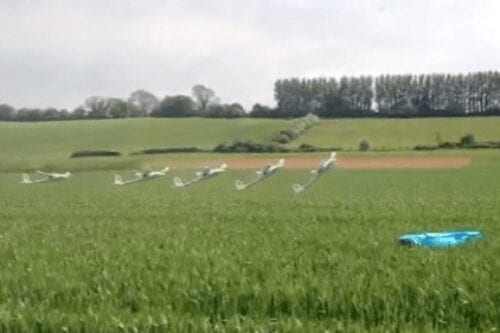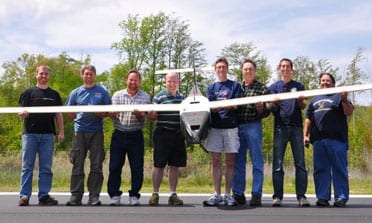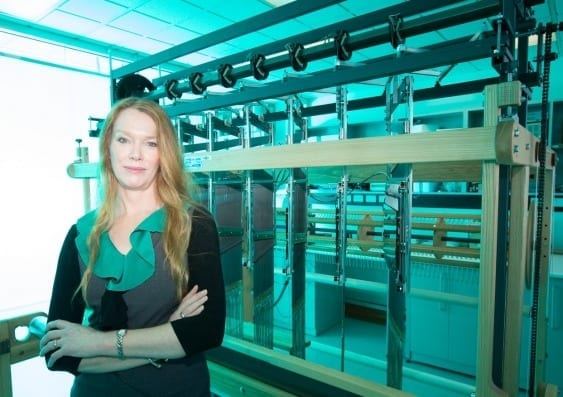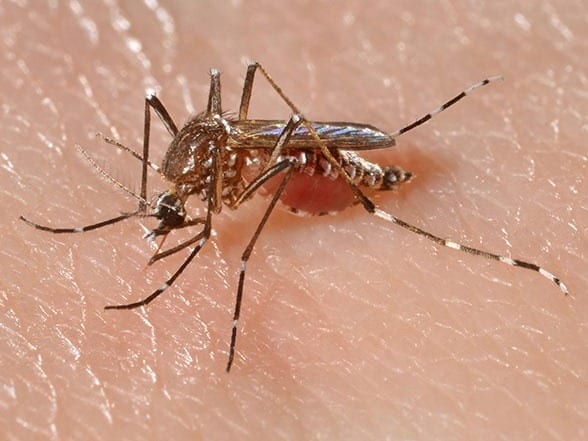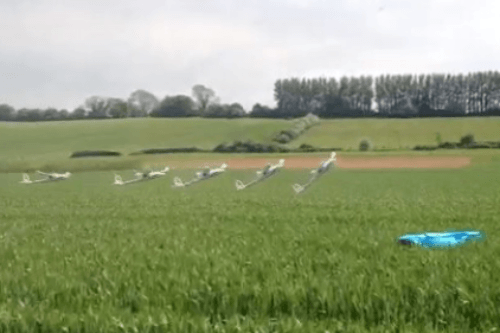
Colin Greatwood, University of Bristol
The very first unmanned aerial vehicle (UAV) to perform a perched landing using machine learning algorithms has been developed in partnership with the University of Bristol and BMT Defence Services (BMT). The revolutionary development of a fixed wing aircraft that can land in a small or confined space has the potential to significantly impact intelligence-gathering and the delivery of aid in a humanitarian disaster.
BMT, a subsidiary of BMT Group Ltd, and the University of Bristol have demonstrated how the combination of a morphing wing UAV and machine learning can be used to generate a trajectory to perform a perched landing on the ground. The UAV has been tested at altitude to validate the approach and the team are working towards a system that can perform a repeatable ground landing.
Current UAVs are somewhat restrictive in that they have fixed and rigid wings, which reduces the flexibility in how they can fly. The primary goal of the work was to look at extending the operation of current fixed wing UAVs by introducing morphing wing structures inspired by those found in birds. To control these complex wing structures, BMT utilised machine learning algorithms to learn a flight controller using inspiration from nature.
Simon Luck, Head of Information Services and Information Assurance at BMT Defence Services, commented: “Innovation is at the heart of everything we do at BMT and R&D projects provide us with the opportunity to work with our partners to develop cutting edge capabilities that have the potential to revolutionise the way we gather information.”
Dr Tom Richardson, Senior Lecturer in Flight Mechanics in the Department of Aerospace Engineering at the University of Bristol, added: “The application of these new machine learning methods to nonlinear flight dynamics and control will allow us to create highly manoeuvrable and agile unmanned vehicles. I am really excited about the potential safety and operational performance benefits that these new methods offer.”
Learn more: UAV performs first ever perched landing using machine learning algorithms
[osd_subscribe categories=’uav-6′ placeholder=’Email Address’ button_text=’Subscribe Now for any new posts on the topic “UAV”‘]
Receive an email update when we add a new UAV article.
The Latest on: UAV
[google_news title=”” keyword=”UAV” num_posts=”10″ blurb_length=”0″ show_thumb=”left”]
via Google News
The Latest on: UAV
- Russian forces attack 10 hromadas in Sumy Oblast, dropping 16 mines on one of themon April 27, 2024 at 4:28 pm
The Russians attacked Sumy Oblast 20 times over the past 24 hours, dropping 16 landmines on one of the hromadas (A hromada is an administrative unit designating a town, village or several villages and ...
- Biden's Aide Mocks Iran Drones, While USA Tries To Stifle Tehran's UAV Industry After Israel Attackon April 27, 2024 at 7:10 am
US Defense Secretary Lloyd Austin cast aspersions on Iran's weapon system while speaking to reporters on April 26. He said that Iran should be "questioning the effectiveness of their weapons systems ...
- Piasecki Smuggler UAV Breaks Coveron April 26, 2024 at 5:52 pm
Piasecki Aircraft has unveiled a small air-launched UAV designed to glide autonomously from altitude and deliver logistics payloads with precision without endangering an carrier aircraft. Dubbed the ...
- Ukrainian Yak-52 Equipped With Machine Gun Shoots Down Russian UAV – Reportson April 26, 2024 at 5:00 pm
A screenshot from a video shared on Telegram showing the Yak-52 circling close to the Russian drone. In an engagement reminiscent of WWII dogfights, a Ukrainian training aircraft reportedly shot down ...
- Introducing the Felon 1.0 UAV: A Game-Changer for Military and Law Enforcementon April 26, 2024 at 8:07 am
The Felon 1.0 UAV is a brand new flying machine that combines the ability to see things from above (surveillance) with the power to attack targets (lethal precision) – making it a major leap forward ...
- Here’s Our First Close Look At A Ukrainian Light Aircraft Turned Long-Range Kamikaze Droneon April 26, 2024 at 6:48 am
Images shared on social media provide an unprecedented look at one of the light aircraft turned into one-way drones by Ukraine. On Apr. 26, 2024, images ...
- Ukraine withdraws Abrams tanks from front line to adapt to Russian UAV threaton April 26, 2024 at 4:37 am
Ukraine has temporarily withdrawn American Abrams tanks from the front line, in part because Russian drones have made their work too difficult, the Associated Press reported on April 26.
- 'Illicit' UAV sales to Iran: Three Indian firms among over dozen sanctioned by USon April 25, 2024 at 7:28 pm
The United States slapped on Thursday sanctions on over a dozen companies, individuals and vessels, including three from India, for facilitating illicit trade and UAV transfers on behalf of the ...
- Ukrainian Fighter Jet Downs Russian Drone with Air-to-Air Missile: Videoon April 25, 2024 at 9:18 am
Video footage purporting to show a Ukrainian MiG-29 shooting down a reconnaissance UAV has been viewed nearly 200,000 times.
via Bing News







